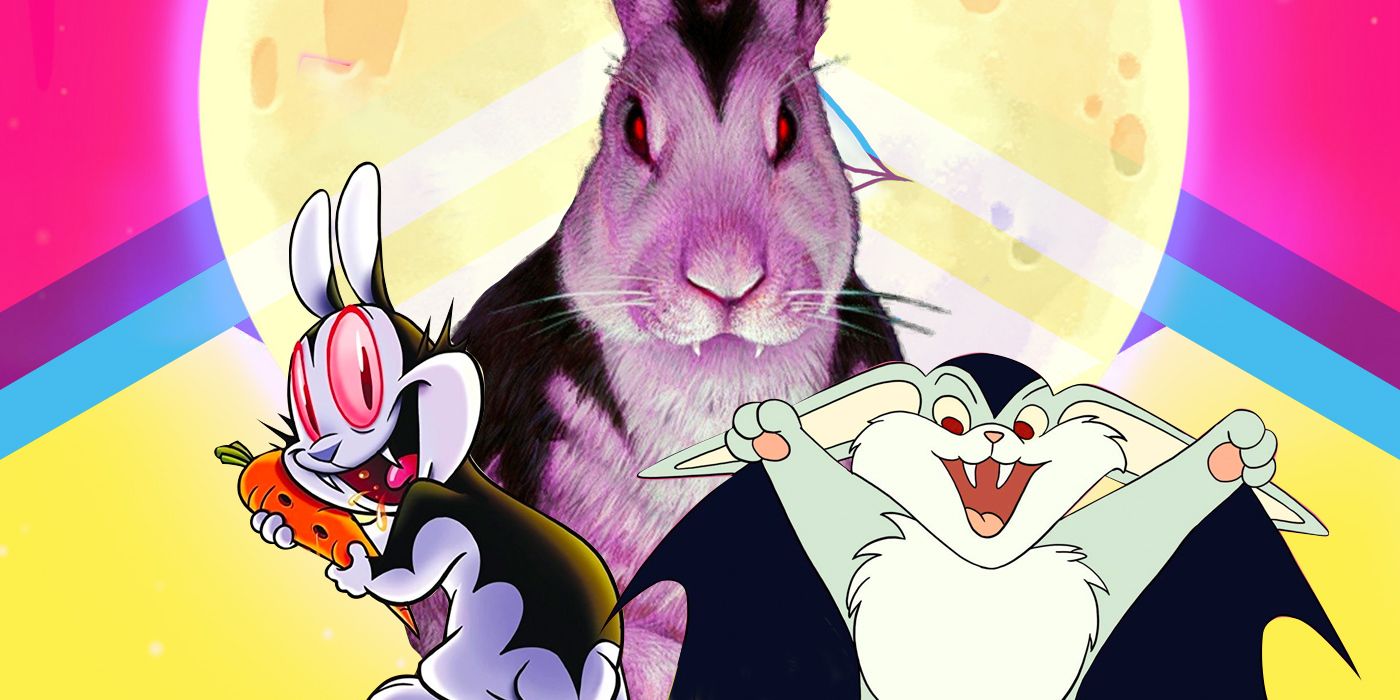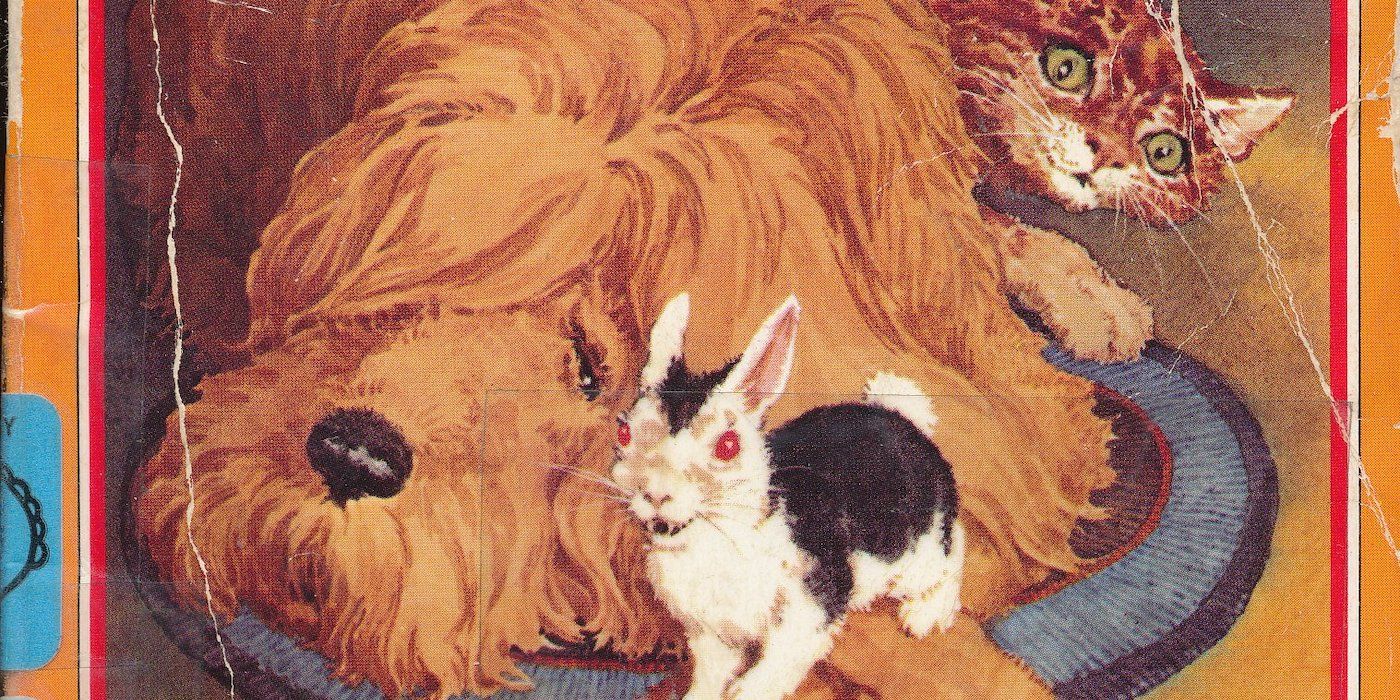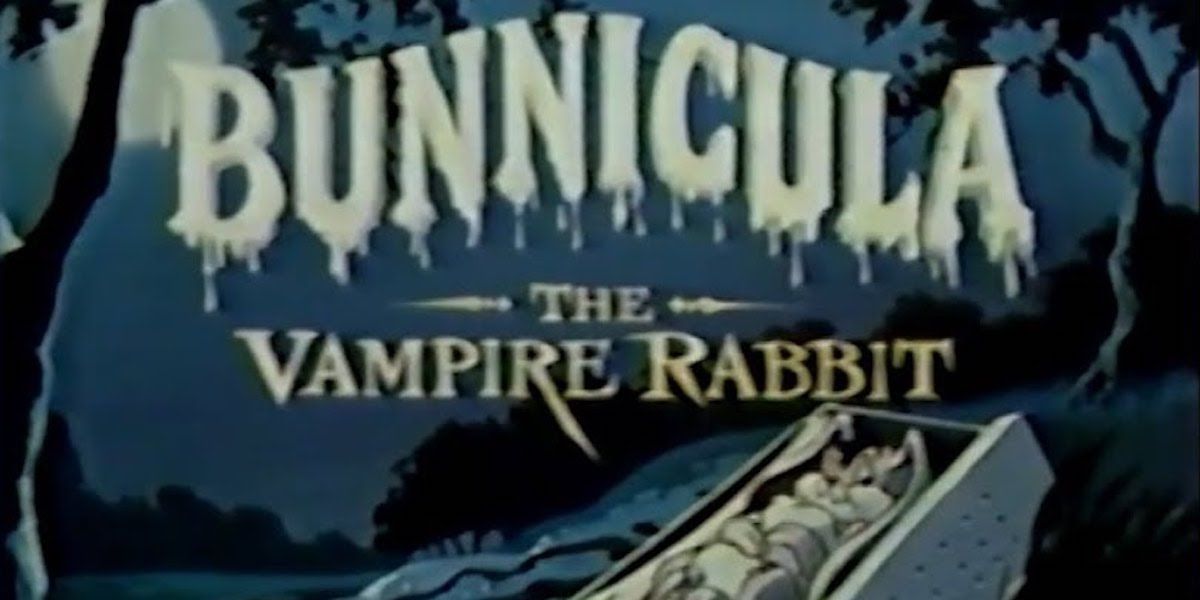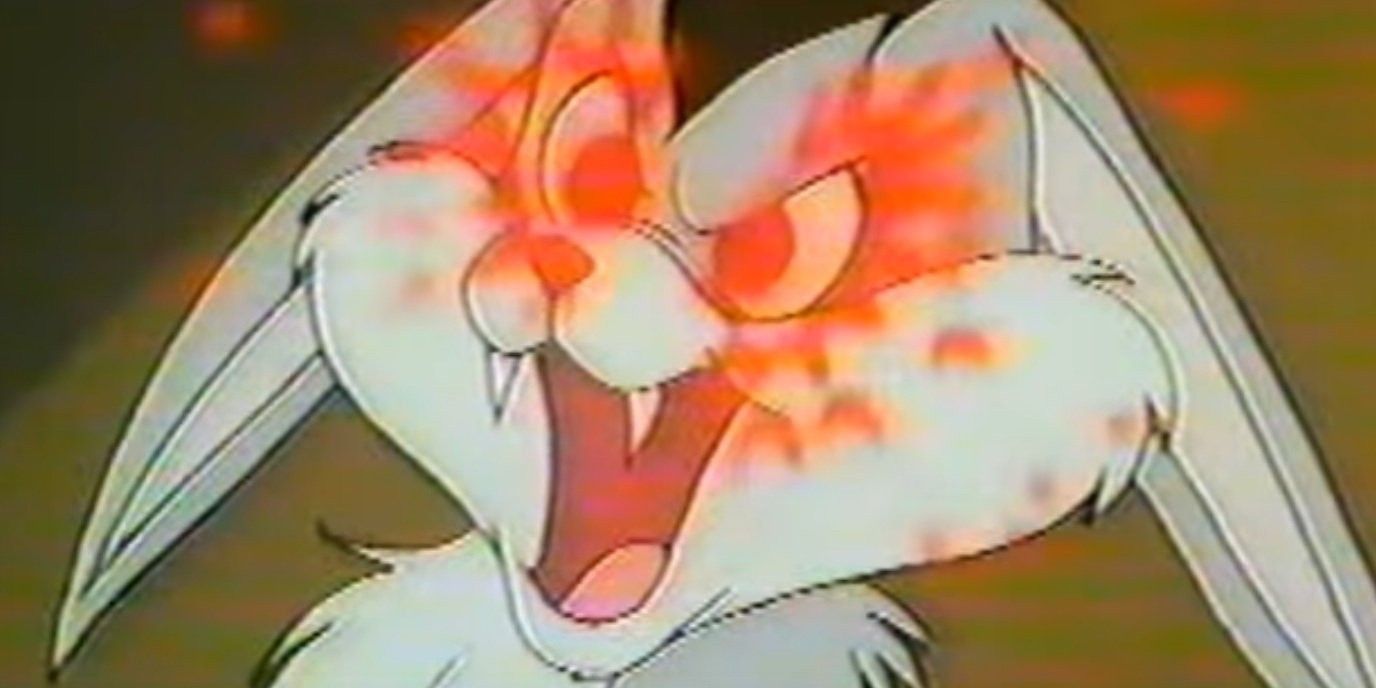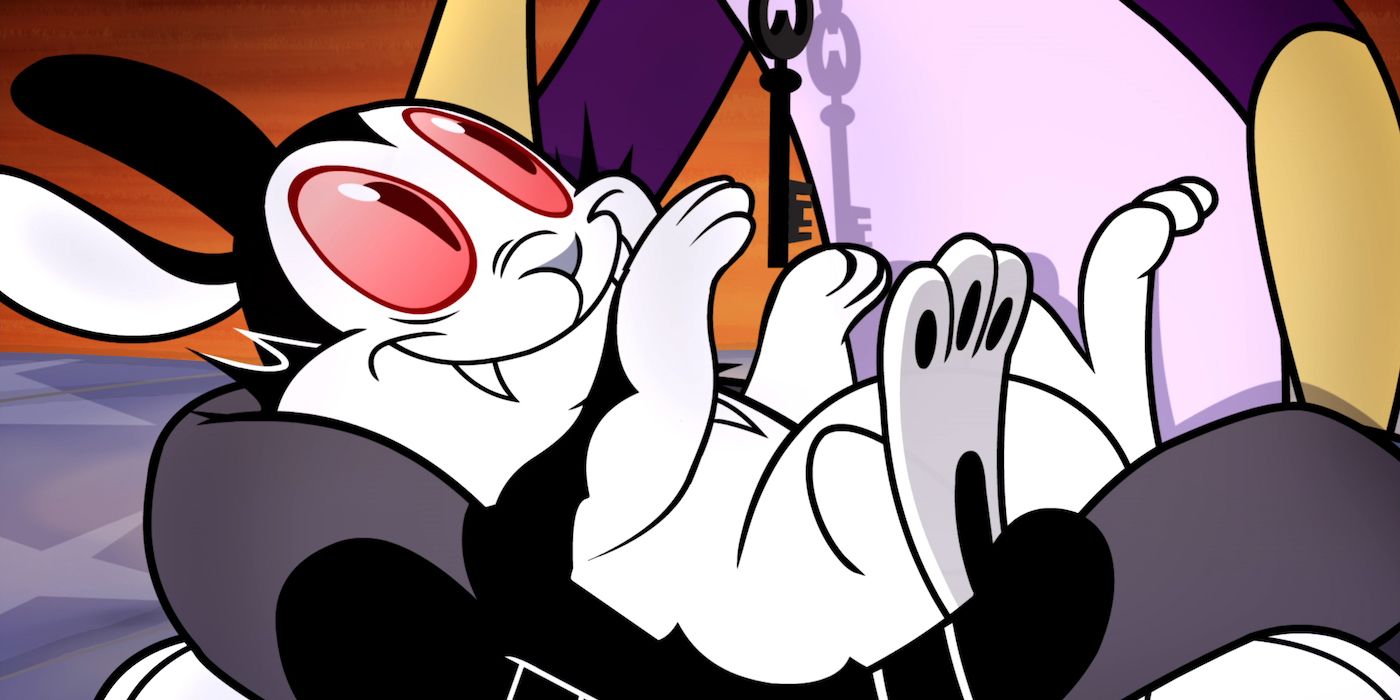Keep your inquisitive apes, bespectacled aardvarks, and giant crimson mutts: to me, the face of children’s literature will always be a vampire rabbit. Bunnicula didn’t stack up many titles or garner quite as much fame as other animals in the kids' book barnyard, but Deborah and James Howe’s comic ode to classic horror has still delighted millions of young readers since Bunnicula: A Rabbit-Tale of Mystery was first published in 1979. Seven chapter books and five picture books detail the adventures of Bunnicula and the other pets of the Monroe family.
Those other pets are the true stars of the series. There’s Harold, an aged, thoughtful, and shaggy dog who would sooner curl up with the Monroe’s youngest son to enjoy treats than probe any mysteries. A charming conceit of the series is that Harold is the “real” author, dropping each manuscript off at his editor’s following the latest adventure. In this, and in his dynamic with the family cat Chester, Harold echoes the good Dr. Watson. Chester would like to think of himself as the Sherlock Holmes of their partnership, with a dash of Dr. Van Helsing’s righteous zeal thrown in. What he doesn’t have is patience, common sense, or any actual menace to fight, as nearly every “supernatural terror” he investigates turns out to be natural and harmless. The duo becomes a threesome in later books when the Monroes adopt Howie, an eager and naïve dachshund who sees Harold as an uncle and Chester as “Pop” (Howie would eventually take over as “author” from Uncle Harold in a spin-off series Tales from the House of Bunnicula).
Bunnicula himself has no voice. He is sometimes at the heart of whatever horror Chester’s paranoia imagines, and sometimes not even present for the adventure. But his red eyes, cape-like markings, conspicuous fangs, and the white vegetables drained of all juice that keep turning up in the Monroe house all strongly suggest (though never confirm) him to be the one genuine – but friendly – creature of the night in the series.
By James Howe’s own accounting (his wife Deborah passed away before the first book was published), “the Bunnicula books are really not about a whole lot – they’re silly and fun. A lot of the fun of them has to do with the word play between Harold and Chester and Howie.” There is certainly fun to be had with the language of the books; they were among the titles that first inspired me to write (I tried penning an entry in the series years before I learned what fanfiction or international copyright laws were). And the character dynamics between Harold and Chester are a fantastic primer for kids ahead of tackling Sir Arthur Conan Doyle. But mystery-solving pets and a vampire rabbit have inherent visual possibilities. The illustrations, almost always provided by either Alan Daniel or Leslie Morrill, do a wonderful job at exploring those possibilities (unfortunately, finding the picture books they illustrated, or editions of the chapter books with their covers, is maddeningly difficult).
Animation can go even further, and at first glance, Bunnicula seems an ideal fit for cartoons. But as charming as the stories are and as suggestive as the illustrations can be, the action of the series is often uncinematic. The plots tend to be thin and the stakes small, when they aren’t wholly fabricated by Chester’s imagination. Howe can craft lovely bits of physical comedy for his animals, but dialogue and narration dominate. The range of settings for the series is narrow too; the first Bunnicula book takes place almost entirely on the first floor of the Monroe’s house, feeling like an animal-starring drawing-room play. Animation, however, doesn’t like to stay still. Any adaptation into the medium would need some degree of expansion.
Young viewers today might be familiar with the Cartoon Network series Bunnicula, developed by Jessica Borutski and Maxwell Atoms (of Billy & Mandy fame). That show certainly expanded on the source material. But kids watching that likely aren’t aware of an earlier adaptation, a TV special from 1982 by Ruby-Spears Enterprises. That’s a shame, because the special is well worth a watch. Not that I can divorce my feelings from nostalgia; I first came by that cartoon and the Bunnicula books in the first grade, and I loved them so much that my teacher gave me her copy of the videotape (it’s still on the shelf to this day). But there is a lot to recommend the special to anyone growing (or having grown) up with the books.
It was produced as part of the ABC Weekend Special, a Saturday morning anthology series with the aim of encouraging child literacy. The program mixed original content with book and fairy tale adaptations. For Bunnicula’s stint on the series, adapting the first (and only) book written at the time, the title was changed to Bunnicula, the Vampire Rabbit. In the books, Howe has always played coy about outright confirming Bunnicula’s nature, but the TV special makes no bones about it. Besides draining vegetables dry, this Bunnicula can fly with batwing flaps under his arms, dematerialize, and play with telekinesis when the moon is full.
But the special takes its time getting to that. The first two-thirds hew fairly closely to the book; Harold is still the narrator and the Monroes still find Bunnicula tucked away in a shoebox with a note imploring his finder to take care of him. Even the fun detail of Harold, with Russian wolfhound blood in his veins, being the only one who can decipher the note’s language gets retained. Chester’s uneasiness at Bunnicula’s presence in the house and his research into vampirism is abridged but accurate, some of the lines coming straight out of the book. But alongside all this adapted material is an original storyline: the food processing plant that keeps the entire town afloat is closing. Mr. Monroe, changed from a college professor to a scientist in the plant, reports home stories of near-fatal accidents that have inspired rumors of a ghostly or demonic presence.
The two plots end up dovetailing nicely when the neighbors become convinced that Bunnicula is the menace behind these accidents, on top of the white vegetables all over town. A classic monster movie chase follows; Harold and Chester rescue Bunnicula and flee into the forest, an angry mob on their tail. The pets end up following a drainage pipe to the food processing plant — while it doesn’t look exactly sinister, there is something suggestive of a mad scientist’s laboratory about its design. And waiting inside are the real culprits behind the accidents: a pack of starving wolves. Harold and Chester manage to lock themselves in a closet while fleeing from the pack, leaving Bunnicula behind. It’s here, unseen by anyone else, that Bunnicula finally shows off his vampire nature to harmlessly dispatch the wolves and rescue his fellow pets.
One can always quibble about an adaptation, particularly when one is a fan. The trade-off for getting a traditionally angry mob is that the role of paranoid, prejudiced antagonist gets outsourced from the Monroe house. In the original book, and for most of the series, it’s Chester who fears and misunderstands Bunnicula, going so far as to try and do him in on several occasions. He may be misguided, well-intentioned, and silly, but his unjustified hostility to the poor bunny gave the pet relationships a wrinkle of complexity that’s missed in the adaptation. Chester’s attempts to comport himself with feline dignity aren’t much in evidence, either; Howard Morris gives a fine performance as his voice, but it’s too manic and panicked, and not nearly haughty enough to match Howe’s Chester. And on the production end, Ruby-Spears – founded by Hanna-Barbera defectors to compete with them in the Saturday morning cartoon market – could charitably be called Hanna-Barbera lite: same generic design sensibility, half the effect in execution.
That’s not to deny the special the visual strengths it does possess. The laboratory-like plant, swampy forests, and picturesque Monroe home make for good settings, and moving the action among them keeps the story from staying still. The wolves have a genuinely intimidating design. Few of the physical gags the Howes wrote made it into the special, but several fun original gags appear in their place. And as limited as the animation is, it gives Bunnicula more personality than he had on the page. He still doesn’t speak, but his expressions and body language in the special establish him as a friendly, sleepy, slightly mischievous baby bunny who can turn on a dime into a dangerous but benevolent monster when the need arises.
As for the writing and the voice acting, they’re more easily commendable. If Morris’ Chester doesn’t match what I hear while reading, he and Jack Carter’s Harold do bounce off one another well as a duo (quite the feat considering the actors hated one another). The changes to Chester’s personality, and to the third act of the story, dilute the Holmes/Watson dynamic somewhat, but it is still present, and Harold remains a solid straight man and narrator throughout. The balance between source material and original content is well-managed, the new gelling nicely with the comic homage nature of the old. But sadly, one person who isn’t happy with the special is its screenwriter, Mark Evanier. Many of the departures from the book were mandated by ABC and took it too far from the book in Evanier’s assessment. “Changing another writer’s work that much always makes me at least a little uncomfy,” he wrote.
If Evanier found his own work too much of a departure from Howe’s writing, it’s a good thing he wasn’t on staff for the modern Bunnicula series; it didn’t retain much more than the title, some character names, and the notion of a vegetarian vampire. It follows the Ruby-Spears special in making Bunnicula overtly supernatural and mischievous, in a much more manic fashion. Harold is down about a hundred IQ points, Chester is often the straight man instead of the deluded instigator of investigations, and they aren’t even the same breed of dog and cat. No Howie, no plots of any of the books adapted, and a different set of Monroes. The chief concerns of the pets are usually keeping their owner Mina ignorant and safe from the supernatural, and making as many references to cult films and TV shows as possible. It has some wonderful animation, fantastic voice acting, and the approval of James Howe himself. As a fan, I enjoy the series in spite of its choices in adaptation.
Cartoon Network was erratic in airing the series, which has been off the air for over three years now. Ruby-Spears never did upgrade their special. And James Howe has no plans for further books for the Bunnicula series or its spin-off. The state of modern media spoiling my taste for franchises and revivals, it isn’t all that distressing to think of Bunnicula and pals as being at rest. The great thing about books, films, shows, and TV specials is that, even when they’re done, you can revisit them any time you’d like. And they’re always open to newcomers, too. Bunnicula books are still in print, and the modern series still reruns on Boomerang. As for Bunnicula, the Vampire Rabbit, it only had one VHS issue, but it’s become readily available on YouTube. And for a flavor of what made the books so much fun in an animated form, it’s still the best option out there.

